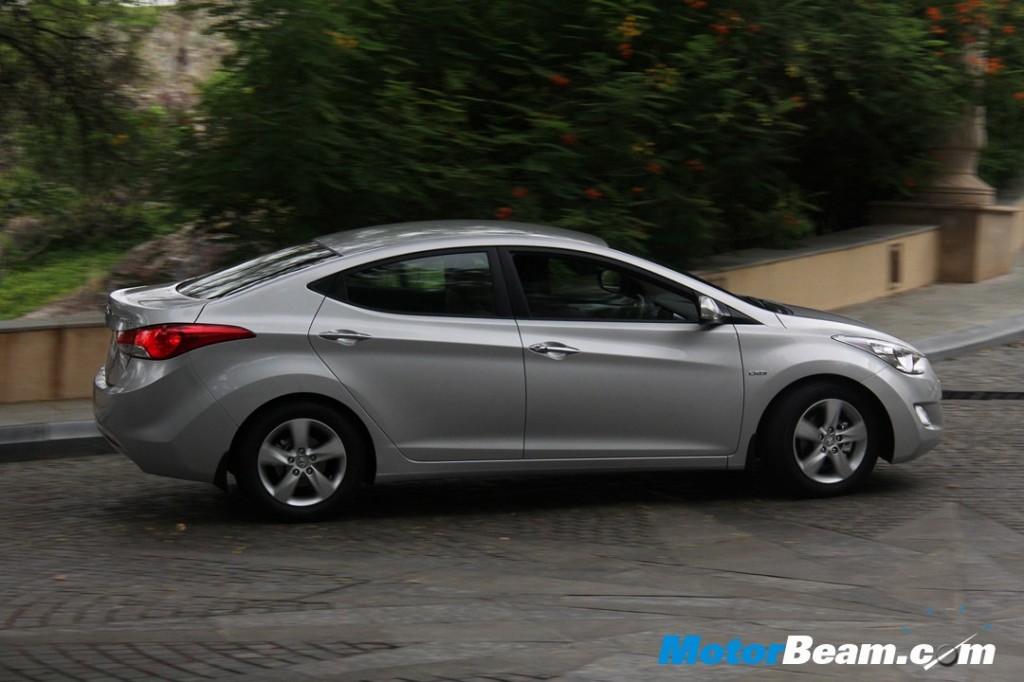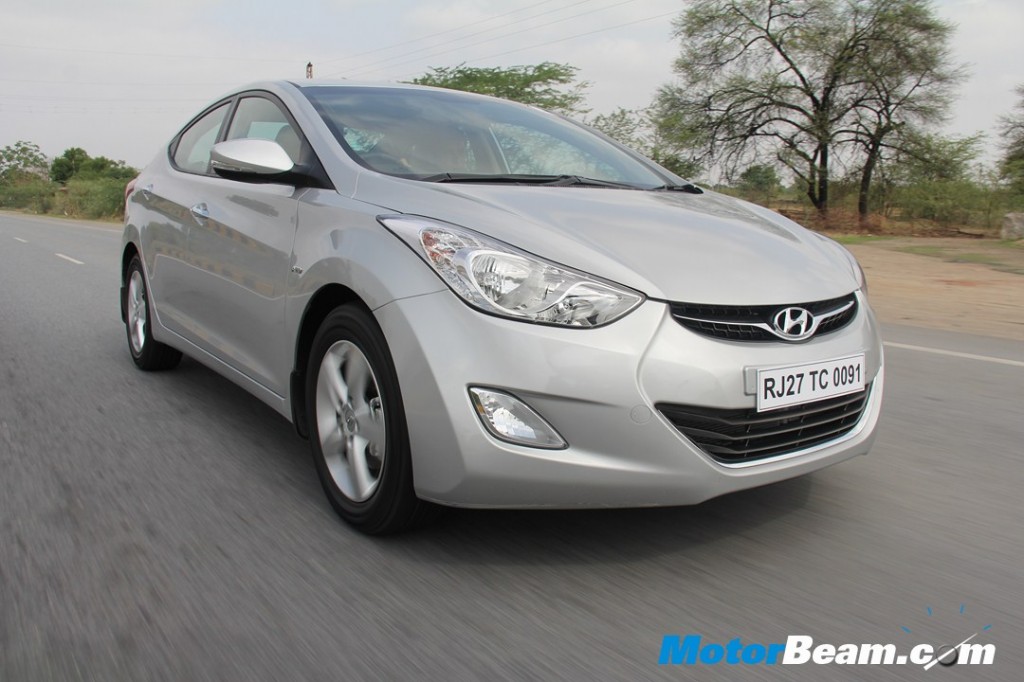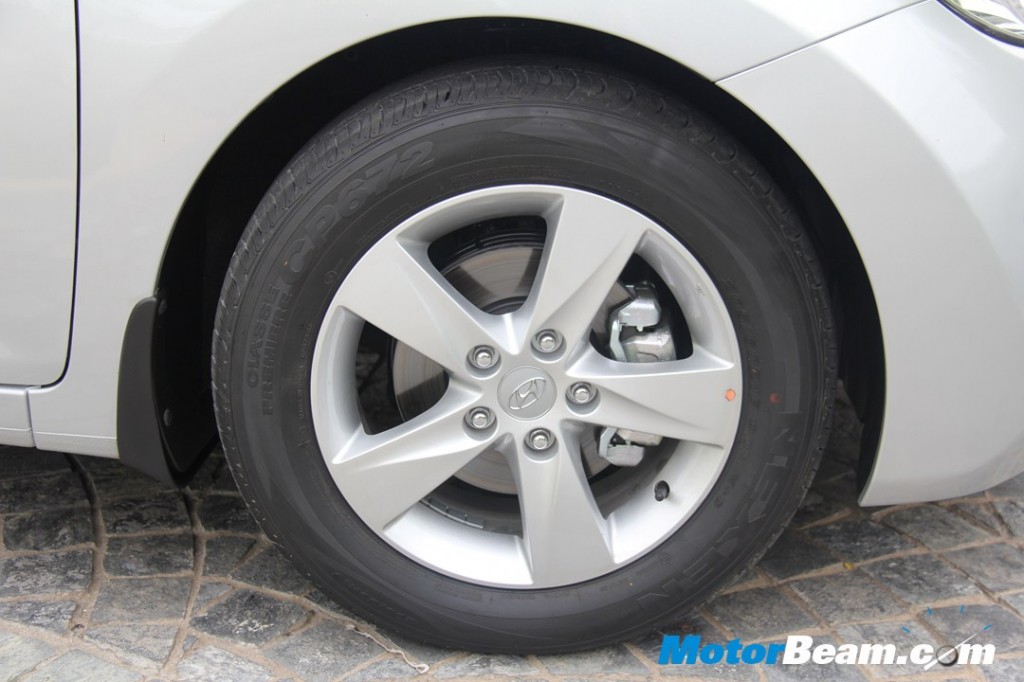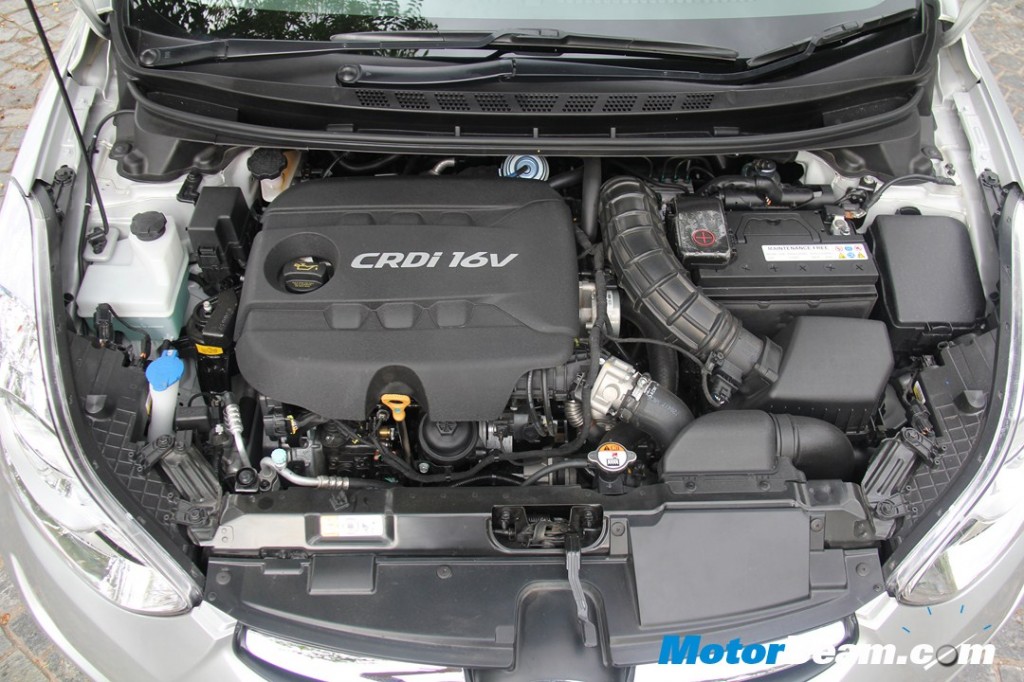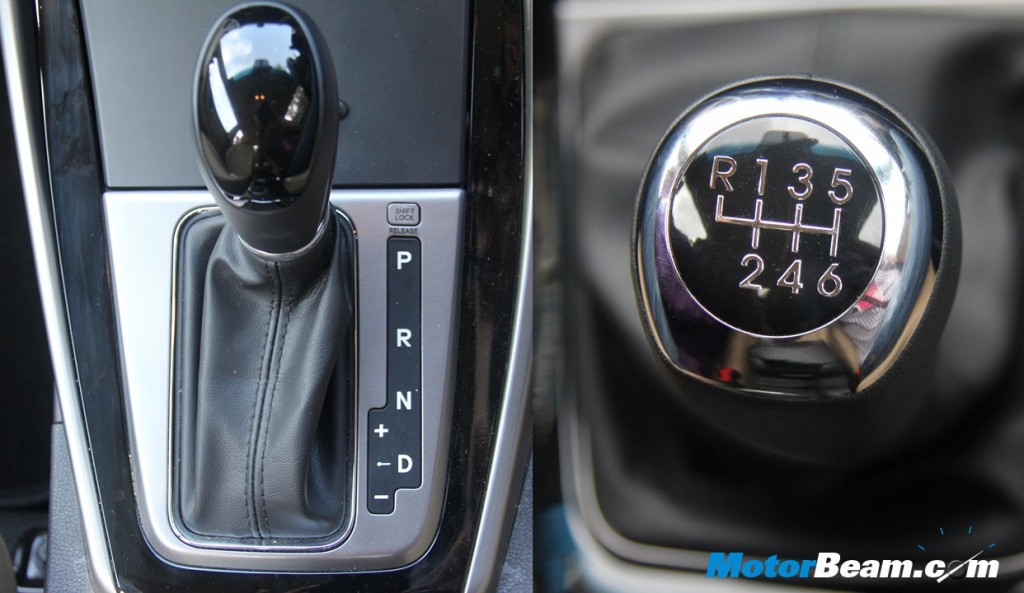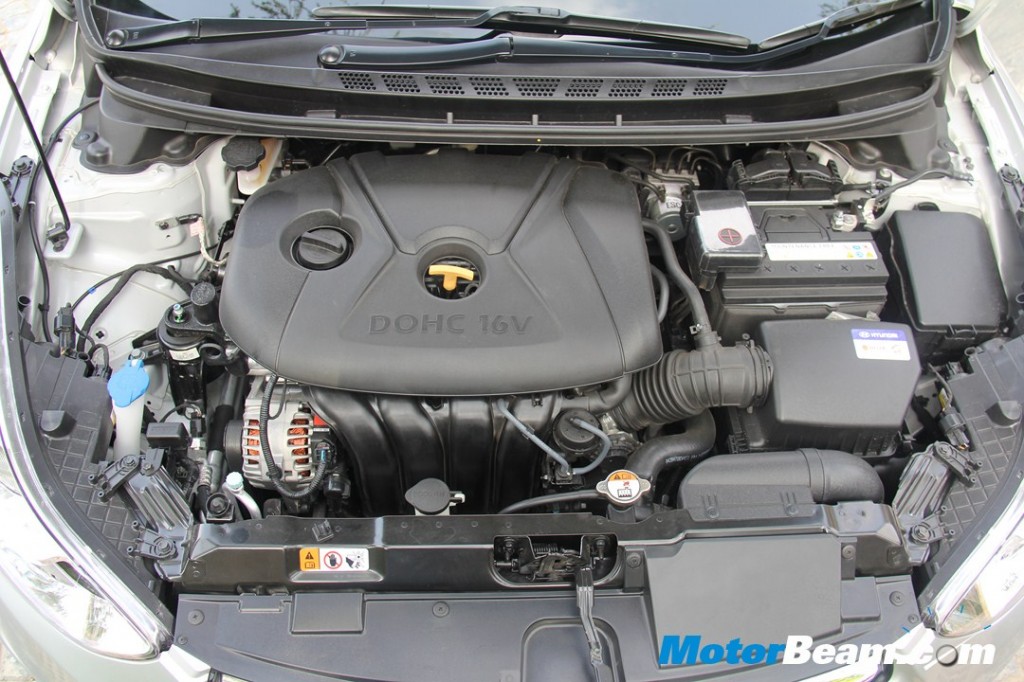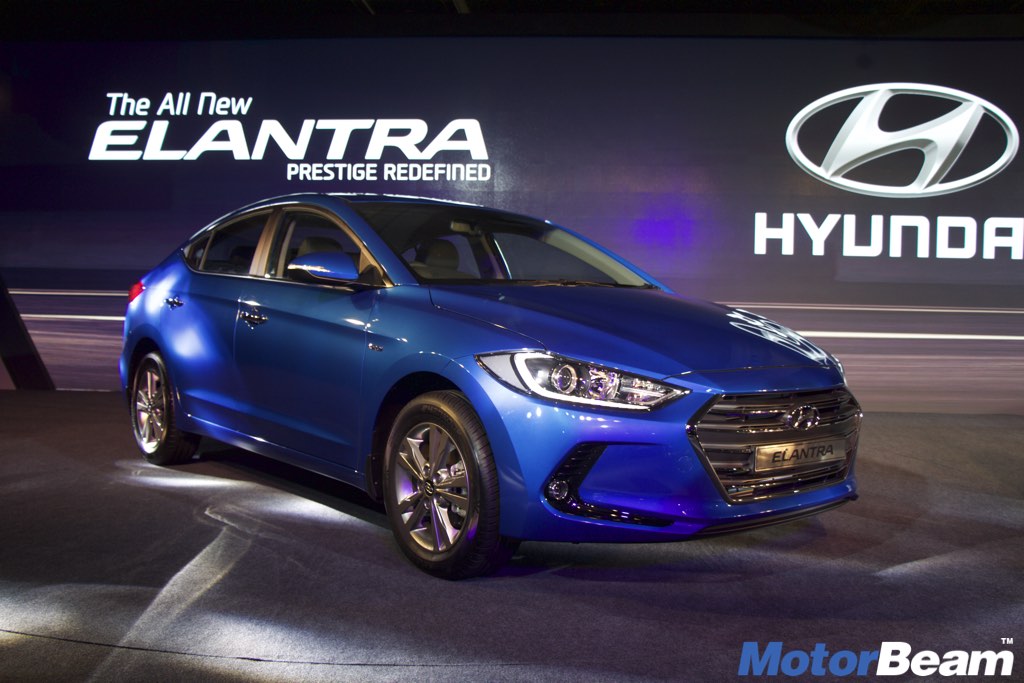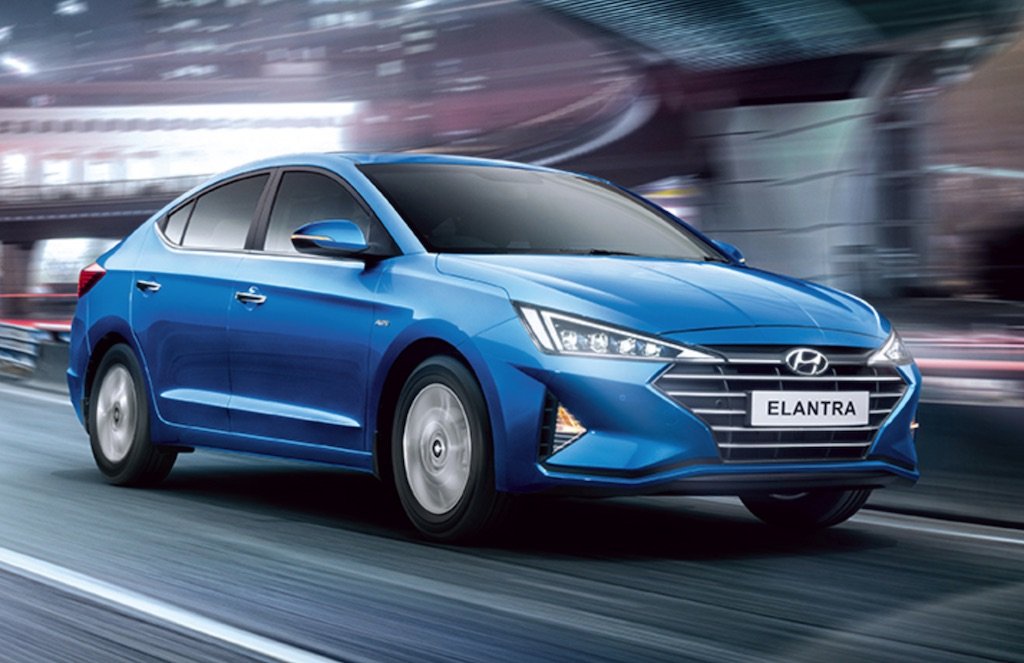Ride, Handling and Braking – The Elantra is almost 55 kgs heavier than the Verna and gets a completely new suspension setup. The ride is complaint with the suspension soaking up most of the bumps at low speeds. At high speeds, large potholes can unsettle the passengers but overall it is pretty good with the suspension clearly being tuned for comfort. High speed stability is fantastic and the Hyundai Elantra was confidently ticking the speedometer at 140 km/h. Even at this speed it felt well planted on the road and did not feel this fast, which is something we missed on the Verna. Even at high speeds the ride does not get too bouncy. NVH levels are good with minimal wind and tire sound.
Handling is far better if you compare it with the Verna and the Elantra does inspire the confidence to reach high speeds without a fuss. The steering is light at low speeds and weighs up a bit at high speeds but not enough for race inspired driving. Having said that, the Elantra is targeted for a comfort oriented drive and does the job brilliantly.
Aiding in the improved handling are 16-inch alloy wheels and 205/60 Nexen silica tyres which not only offer sufficient grip but also have a lower resistance of rolling friction thereby helping increase the fuel efficiency marginally. These tyres heat up far less than regular tyres. The Hyundai Elantra gets all 4-disc brakes with 4-channel ABS and EBD. Standing on the brakes at 100 km/h, the Elantra stopped without any sideways twitch. Hyundai has equipped the car with VMS (Vehicle Stability Management) which also corrects the steering input in case the car has lost control, its like an extended version of the ESP. There is certainly a big step forward in the high speed stability department.
Performance – Hyundai is offering the new Elantra in both petrol and diesel options, mated to a 6-speed manual and automatic gearbox. The diesel engine is from the Verna, producing identical power and torque output, while the petrol is a new 1.8-litre motor. The 1.6-litre CRDI engine punches 128 PS of power at 4500 RPM and a torque of 260 NM between 1900 – 2750 RPM. It incorporates a Variable Geometry Turbocharger (VGT). The six speed gearbox is again identical to the Verna expect for the fact that the sixth gear is now taller. Obviously the manual variant seems quicker to drive. In the manual gearbox, there is a hint of turbo lag after which the Hyundai Elantra pulls cleanly. Even though the competition offers more power, the Elantra does not feel underpowered at all. Infact, power is sufficient throughout the rev band and this will help achieve better mileage figures.
The automatic variant uses a single clutch gearbox with tiptronic function. By virtue of the single clutch, there is a slight lag between shifts if you floor the pedal to the metal. Overtaking on the highway is not a task, but if you want to make it faster, use the manual mode via the tiptronic function. All automatic variants, be it petrol or diesel will have hill hold function as standard. Hill hold does not allow the car to roll back on an incline for about 2 – 5 seconds, thereby giving enough time to the driver to step on the gas. A very practical and useful feature in crowded cities where you have to encounter numerous flyovers on your way to work.
The all new 1797cc, DOHC, petrol engine produces 149.5 PS of peak power at 6500 RPM and 178 NM peak torque at 4700 RPM. I had a very small stint on the automatic variant and it felt pretty good. There was no lag thanks to the Dual VTVT but I would not be in the right position to write much as I had barely driven the petrol variant. We expect the diesel motor to return a efficiency of 14 km/l while the petrol will do about 10 kms to the liter. ARAI certified mileage figures have not been revealed yet and we will update the real time fuel efficiency LATER. There is an ECO Mode which when activated, shifts gears at lower revs and optimizes gearshifts for better fuel efficiency. NVH levels are good, especially at idle.
Head over to the next page to read our conclusion on the Hyundai Elantra.


